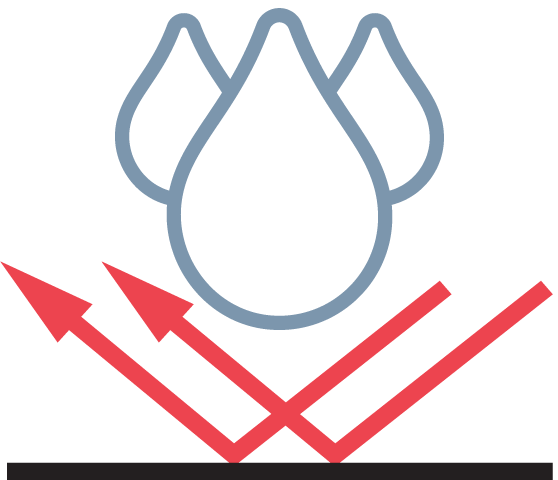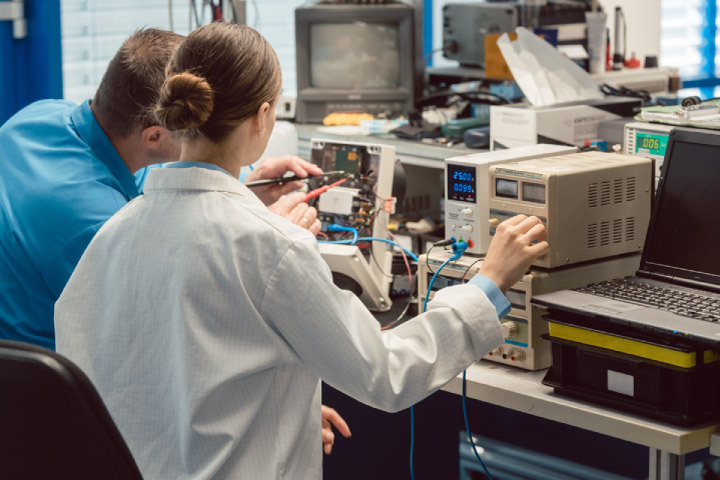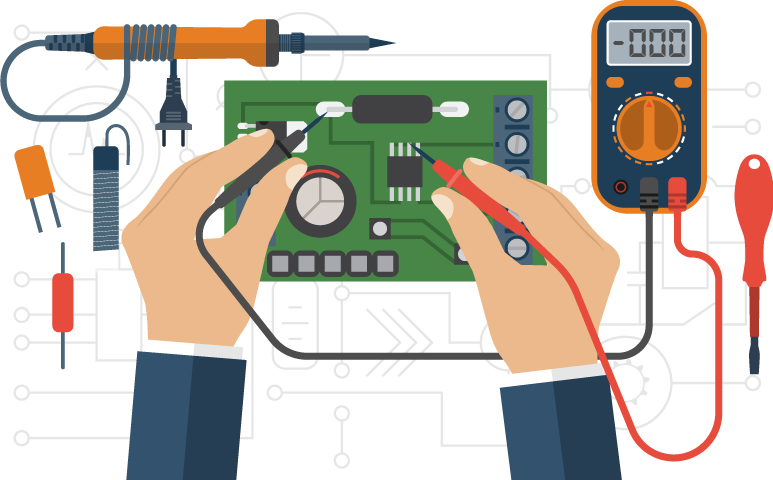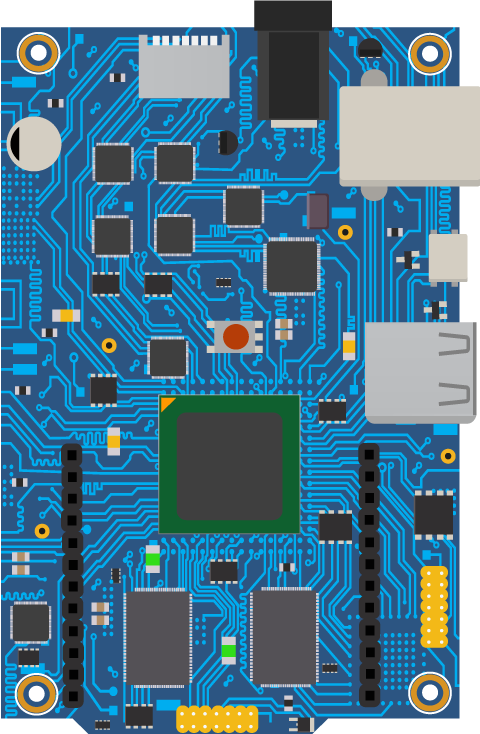Fab Insights: DVT in PCBA Product Development
Once a new development project completes the evaluation validation test (EVT) process, it is time to undertake the DVT (Design Validation Test) stage. Ideally, you will have a single mass production-worthy configuration test ready before beginning this step. But in practice, this isn’t common.
Checkpoint
Water and dust testing results at this stage will determine your IP (Ingress Protection) code rating.

The DVT process focuses on three main areas:
- Preparing tools and techniques to complete a dependable small-batch manufacturing run
- Ensuring your small-build results meet cosmetic and environmental requirements using finalized mass production tools, components, and materials
- Measuring performance across the unit’s expected manufacturing life variance
This is the second in our series on PCBA development stages. Other articles about the EVT and PVT stages are also available. Now, let’s review what happens during the DVT planning stage, what can go wrong, and what comes next.
DVT in the Design Cycle
These are the main activities during the DVT stage:
- A first build execution with real manufacturing processes beyond prototype volumes
- Product qualification, certification, and reliability testing
- Measured electrical performance testing at the boundaries of manufacturing

The DVT cycle occurs after the EVT stage that validated your first prototype build’s success and built confidence the design met functional parameters. At the DVT stage, the design is not yet ready for manufacturing runs until this stage proves its maturity. All the certifications, qualifications, and specification requirements get tested now. This ensures the product will be ready for customer use across the product lifecycle.
The DVT stage has a small build quota, typically 50-200 units. Burn-in qualification, drop tests from known heights, submersion in water, and intensive battery testing puts the product through rigorous certification testing.

The results from water and dust testing will determine your IP (Ingress Protection) code rating. This step is crucial for products requiring regulatory certifications from the FCC (Federal Communications Commission) or UL (Underwriters Laboratory).
Electrical testing during DVT is also required to verify the corner variance cases. Sometimes called “skew testing,” these experiments force manufacturing variances to their acceptable limits to verify product performance will meet specification requirements even at unusual extremes.
While testing conditions can often fall outside 3 or 4-sigma variances, the intention is to prove that specifications hold up at boundary conditions. If issues crop up at this step, make design or manufacturing process changes now. It is far less costly and time-consuming to make changes during DVT than to identify problems during the natural process drift that happens while manufacturing at large volumes.
Read our Engineer's guide for an overview of the EVT DVT PVT process from the beginning.
What Can go Wrong During DVT

Without proper planning, the DVT stage has the potential for challenges. However, a design manufacturing plan (DFM) can mitigate and minimize these risks. Working with a contract manufacturing (CM) partner that has access to the supply chain provides expertise and helps you avoid unwanted issues.
Some of the risks during the DVT stage include:
- The tools and techniques for a dependable small-batch manufacturing run are not yet ready for DVT
- Small batches cannot be built using mass production tools, components, and materials
- Required components and other manufacturing materials are not available for timely builds
- The product certification or qualification testing fails
- Yields turn out to be unacceptably low
- The product fails electrical performance corner-case testing
What’s Next

The DVT engineering results must be successful before the production of the final design can take place in suitably large volumes for sale. Your contract manufacturing partner (CM) can help you develop a design for the manufacturing plan that outlines success for this step of development. Minimize DVT risks by leveraging a thorough planning cycle.
During DVT, testing feedback may require final design iterations and changes to manufacturing processes. Working with a contract manufacturing partner that makes changes easy and communicates them through the manufacturing supply chain can be painless.
At the end of DVT, you should be confident that any design or process issues causing unacceptable yields or quality aspects have been corrected. When DVT is completed, the project can successfully move to the final project phase, which is production validation testing (PVT).
Related Topics
How Can a Box Build Benefit Your PCBA Design?
PCBA box build is a sophisticated process involving the design, production, and construction of an electromechanical system that goes beyond a PCBA.
Insider's Guide to Navigating Box Build PCBA Projects
This guide will help you become familiar with box build assembly, decide if it’s right for your PCBA project.
Overview of PCBA Processes and Technologies
We’ll provide you with an introduction to each step and explain its significance in the larger PCB manufacturing and assembly process.
Read About the EVT
The engineering validation test (EVT) stage determines whether your PCBA design meets your customer’s functional product requirements.
About MacroFab
MacroFab offers comprehensive manufacturing solutions, from your smallest prototyping orders to your largest production needs. Our factory network locations are strategically located across North America, ensuring that we have the flexibility to provide capacity when and where you need it most.
Experience the future of EMS manufacturing with our state-of-the-art technology platform and cutting-edge digital supply chain solutions. At MacroFab, we ensure that your electronics are produced faster, more efficiently, and with fewer logistic problems than ever before.
Take advantage of AI-enabled sourcing opportunities and employ expert teams who are connected through a user-friendly technology platform. Discover how streamlined electronics manufacturing can benefit your business by contacting us today.